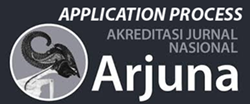Public Perception of Street Vendors in Pontianak Auditorium Park Tanjungpura University
DOI:
https://doi.org/10.59653/ijmars.v2i02.707Keywords:
Perception, Society, Street VendorsAbstract
Business development in the Auditorium Park of Tanjungpura University, especially street vendors, has increased, giving rise to increasingly competitive competition between street vendors. This study aims to describe and analyse the factors of public acceptance of street vendors, the situation of the existence of street vendors and target object factors that influence the emergence and increase of street vendors around the Auditorium Park of Tanjungpura University Pontianak. The method used in this study is a qualitative research method using a descriptive approach-data collection using interviews, observation, and documentation. The data analysis techniques used are data reduction, data presentation and conclusion. The results of this study showed that several factors were found, such as the public acceptance of street vendors who were dominant to an unfavourable view of the existence of street vendors that caused congestion and slums around the Auditorium Park. Then, from the Situation factor, the existence of street vendors makes it irregular, and the scattered garbage creates a shabby impression around the park. The last factor of the target object of street vendors is the park, which is one of the objects, and the presence of visitors or people who gather in the park auditorium to attract street vendors. Suggestions addressed to Tanjungpura University must be given clear regulations and strict action from Tanjungpura University for street vendors selling in Tanjungpura University Auditorium Park so that they are orderly so as not to take the shoulder of the road that hinders the mobility of road users. To the Government, street vendors must be given a unique, strategic and spacious place so that street vendors are free to trade and the city layout is neatly arranged.
Downloads
References
Abdullah, T., Lee, C., & Carr, N. (2023). Defining success and failure in the hospitality industry’s microenterprises: A study of Indonesian street food vendors. International Journal of Hospitality Management, 109. https://doi.org/10.1016/j.ijhm.2022.103403
Akil, A., Yudono, A., Osman, W. W., Ibrahim, R., & Hidayat, A. (2023). Suitable Potential Locations for Street Vendors in Makassar City, Indonesia. International Review for Spatial Planning and Sustainable Development, 11(3). https://doi.org/10.14246/irspsd.11.3_152
Alizamar Nasbahry Couto. (2016). Psikologi Persepsi & Desain Informasi (Sebuah Kajian Psikologi Persepsi dan Prinsip Kognitif Untuk Kependidikan dan Desain Komunikasi Visual). . Media Akademi.
An-nat. (1993). Implementasi Kebijakan Penanganan PKL: Studi Kasus di Yogyakarta dan DKI – Jakarta. Universitas Gadjah Mada.
Basheikh, Z. O., Jumbe, T., & Kulwa, K. (2023). Perception and attitudes of street food vendors toward the healthiness of meals prepared and sold in Dodoma. Food Science and Nutrition, 11(7). https://doi.org/10.1002/fsn3.3374
Bimo Walgito. (2010). Pengantar Psikologi Umum. C.V Andi.
Damsar. (2002). Enam Dimensi Strategis Administrasi Publik. Gava Media.
Dian Risma Fildhania. (2020a). Dampak Keberadaan Pedagang Kaki Lima Terhadap Keselamatan Pejalan Kaki (Studi kasus Di Jalan Lingkar Kampus Kopelma Darussalam). Universitas Islam Negeri Ar-Raniry Darussalam Banda Aceh.
Dian Risma Fildhania. (2020b). Dampak Keberadaan Pedagang Kaki Lima Terhadap Keselamatan Pejalan Kaki (Studi kasus Di Jalan Lingkar Kampus Kopelma Darussalam). Universitas Islam Negeri Ar-Raniry Darussalam Banda Aceh.
Donny Prasetyo. (2020). Memahami Masyarakat Dan Perspektifnya. Manajemen Pendidikan Dan Ilmu Sosial, 1, 163–175.
Fattah Hanurawan. (2010). Psikologi Sosial Suatu Pengantar. PT Remaja Rosdakarya.
Gilang Permadi. (2007). Pedagang Kaki Lima: Riwayatmu Dulu, Nasibmu Kini. . Yudhistira.
Ismanidar. Amirullah. Saiful Usman. (2016). Persepsi Masyarakat Terhadap Pedagang Kaki Lima Di Kota Banda Aceh. Jurnal Ilmiah Mahasiswa Pendidikan Kewarganegaraan Unsyiah, 1, 147–157.
Joko Suwandi. (2012). Pedagang Kakilima (Pkl) Di Kota Surakarta: Persepsi Masyarakat dan Alternatif Penanganannya. Pendidikan Ilmu Sosial, vol 22.
Navarrete-Hernández, P., Alford, M., & Toro, F. (2023). Inclusive informal-to-informal trade: the poverty alleviation potential of street vendors’ trade networks in Santiago de Chile. Third World Quarterly, 44(8). https://doi.org/10.1080/01436597.2023.2208060
Pilamala Rosales, A., Linnemann, A. R., & Luning, P. A. (2023). Food safety knowledge, self-reported hygiene practices, and street food vendors’ perceptions of current hygiene facilities and services - An Ecuadorean case. Food Control, 144. https://doi.org/10.1016/j.foodcont.2022.109377
Porras-Santanilla, L., & Fleischer, F. (2023). Bogotá street vendors using tutela as a sword: the symbolic power of law in practice. Third World Quarterly, 44(7). https://doi.org/10.1080/01436597.2023.2183190
Richard Arends. (2008). Learning to Teach: Belajar Untuk Mengajar. Pustaka Pelajar.
Rodianti. (2021). Persepsi Masyarakat Mengenai Penempatan Pedagang Kaki Lima Di Kota Palopo. Institut Agama Islam Negeri Palopo.
Sri Amiranti dan Erwin Sudarma. (2008). Kajian Karakteristik Lokasi Pedagang Kaki Lima (PKL) sebagai Bagian dari Manajmen Lingkungan Perkotaan di Surabaya. Purifikasi, 9.
Tri Agus Maulana. (2023). Persepsi Masyarakat Terhadap Metode Khuruj Oleh Jama’ah Tabligh.
Werkneh, A. A., Tewelde, M. A., Gebrehiwet, T. A., Islam, M. A., & Belew, M. T. (2023). Food safety knowledge, attitude and practices of street food vendors and associated factors in Mekelle city, Northern Ethiopia. Heliyon, 9(4). https://doi.org/10.1016/j.heliyon.2023.e15126
Winda Darmawan. (2022). Persepsi Sosial Masyarakat Terhadap Perilaku Remaja Dalam Memanfaatkan Ruang Publik Taman Kota Ketapang Di Kabupaten Ketapang. Fakultas Ilmu Sosial Dan Ilmu Politik Universitas Tanjungpura Pontianak.
Downloads
Published
How to Cite
Issue
Section
Categories
License
Copyright (c) 2024 Hendryan, Chainar, Nurwijayanto, Desca Thea Purnama, Marini

This work is licensed under a Creative Commons Attribution-ShareAlike 4.0 International License.
Authors who publish with this journal agree to the following terms:
- Authors retain copyright and grant the journal right of first publication with the work simultaneously licensed under a Creative Commons Attribution-ShareAlike that allows others to share the work with an acknowledgement of the work's authorship and initial publication in this journal.
- Authors are able to enter into separate, additional contractual arrangements for the non-exclusive distribution of the journal's published version of the work (e.g., post it to an institutional repository or publish it in a book), with an acknowledgement of its initial publication in this journal.
- Authors are permitted and encouraged to post their work online (e.g., in institutional repositories or on their website) prior to and during the submission process, as it can lead to productive exchanges, as well as earlier and greater citation of published work (See The Effect of Open Access).
























